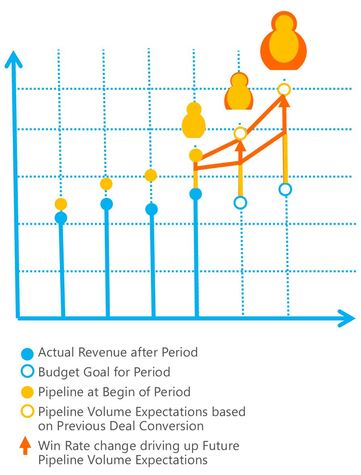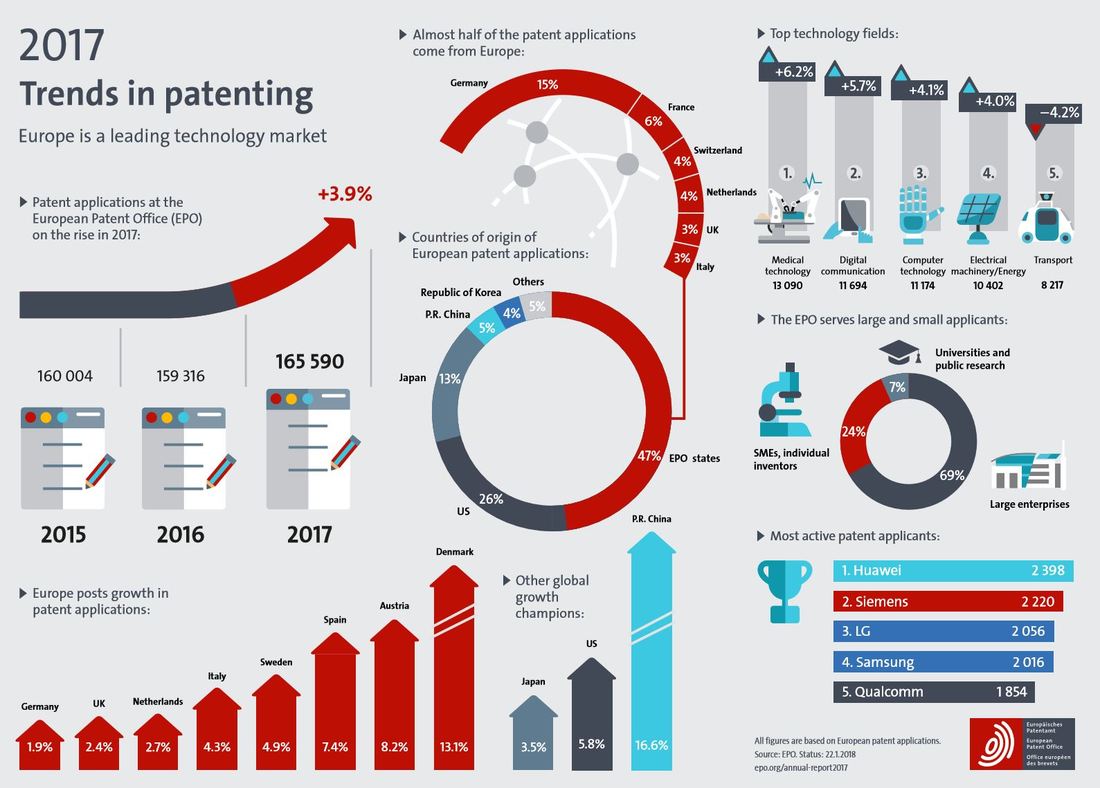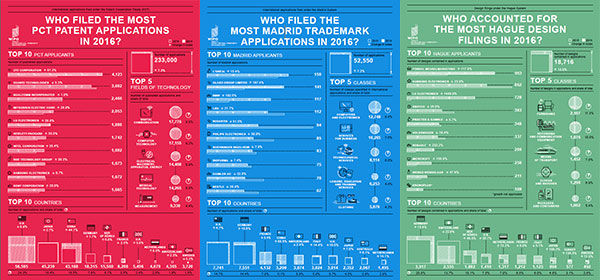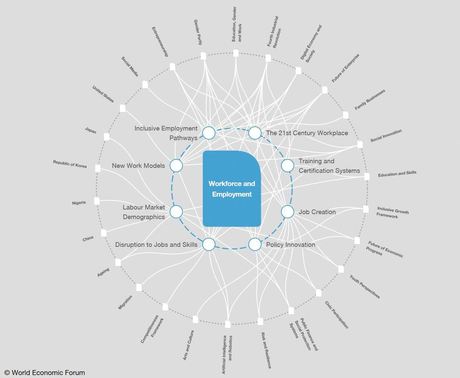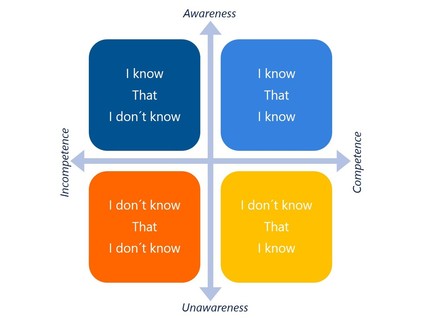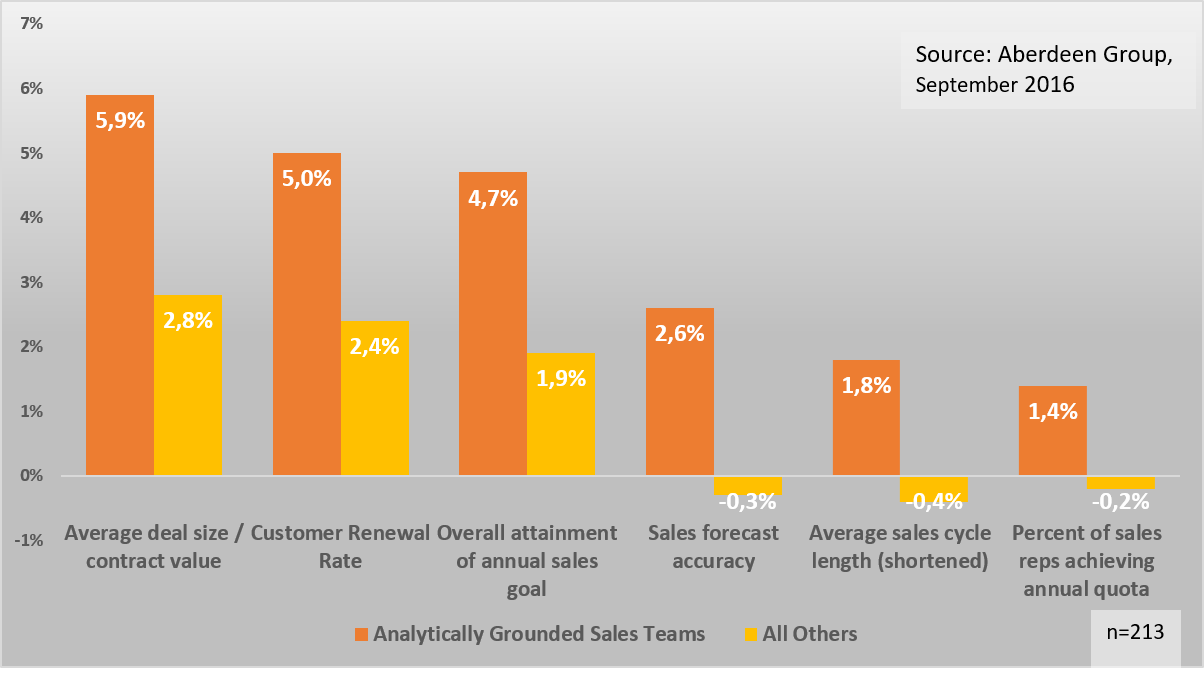The formal concept to manage this challenge in business is called Sales Pipeline Management. It´s bridging today´s deal-by-deal business execution with the projected business attainment on an opportunity-by-opportunity basis. While, it is the shared formal concept for all stakeholders, it allows for different perspectives:
While there are plenty of publications on Pipeline Management, I would like to share some perspective, why Quality must beat Quantity! Ideally, all your opportunities convert to business and contribute to the goal attainment. However, reality is very different. Deals are slipping into future quarters, they close smaller than expected or simply are lost. Let me introduce some commonly used concepts to address the lack of control on the pipeline:
In essence, you can either further mobilize your demand generation engine to put more deals into the pipeline (increase Quantity) or lose less from it (increase WinRate) - either way, you will need to prepare for the unexpected. Important to keep in mind that both approaches are limited by available sales capacity of the organization. As far as the laws of mathematics refer to reality, they are not certain; and as far as they are certain, they do not refer to reality. The Spreadsheet Acrobats will tell you that the required future Pipeline Threshold to hit your future sales target ("pipeline coverage") will be the future target to go plus an % uplift. The amount of required % uplift is defined by the % amount of historically lost deals. In other words, we set the pipeline coverage goal high enough so, we -hopefully- cater for potential future losses.
The mathematical approach alone is not getting you on the safe side. You end up in an unhealthy race fighting lost opportunities with more demand generation. However, the more pipeline volume we expect, the more difficult it is to find sufficient deals and the harder it gets to reach a similar success rate again. Fighting the tendency of dropping WinRates through incremental volume requirements we can call the Matryoshka Effect in Pipeline Coverage Requirements - the Pipeline Coverage targets keep going up while WinRates are trending downwards. In reality, many leaders still prefer to drive the hard fact based, quantitative approach over qualitative coaching. The reason is simple: It´s easier to scale pipeline generation within a sales organization (all hands on deck!"), than coaching sellers, partners and marketing for elevated deal quality. The only way to escape Matryoshka’s appetite for more is by putting focus on the qualitative approach to deals, both on the Demand Generation and on the Deal Management side. Increasing the number of healthy deals (and the healthy meals for Matryoshka) will get your pipeline into a stable, healthy state. Give it a serious try, put focus on the organizational capability and you will be surprised, both by the qualitative and the quantitative effects it triggers.
The very practical approach of Coaching for Pipeline Success [Keith Rosen] works well for me but, Training alone doesn't develop champions. Leaders do!
0 Comments
There is a chicken-egg-interdependency of business- and Intellectual Property strategy. This explains, why IP-strategy discussions without a deep understanding of business makes no sense. Seeking the core of business transformation in digital technology adoption only is not enough. The Intellectual Property Strategy will likely decide who takes control on the whole value chain and the underlying business model - who sits in the front seat and who must find a place on the backbench. Even though that patents represent a part of innovation only, they still indicate where the energy is in a respective geography, industry, or even company. The annual reports of patent offices provide some interesting perspectives worth exploring. The factory of the future will have only two employees, a man, and a dog. The man will be there to feed the dog. The dog will be there to keep the man from touching the equipment.
With the separation of Software from Hardware arriving in automotive industry, a whole set of new proprietary software with respective End User Licensing Agreements (EULA) will be coming down the road. It seems we soon have to familiarize ourselves with the fact that we can´t own a car entirely anymore - primarily not because we all move into the share economy model but driven by the fact that the car manufacturer will no longer own or control the required software IP. Automotive Industry for years pushed towards external innovation and external labor to reduce capital lockup - Software IP will be a game changer for car vendors who want to keep control on their core business. This idea is intriguing us because manufacturers need to go beyond selling physical car assets and must discover us drivers as customers - welcome to next generation Customer Relationship Management and the essence of customer intimacy for an old economy! However, transformation in software industry is going deep as well. What has worked in a traditional productized Sell-To model needs to get complemented by Sell-With and Sell-Through approaches to meet the new customer expectations. Software IP gets embedded in products, cloud-based services become essential part of other products or your current customer may want to join forces with you on innovation. Either way, it´s time to revise value propositions, to reskill the salesforce and to tune the commercial backbone towards new ways of monetization. Digital Transformation, Industry 4.0 and a solid IP Strategy belong together and form the common ground for your business in near future, so let´s prepare for it now. Good news, the cheese may already have moved on but the opportunity maybe bigger than ever and the driver seat is not decided yet!
No matter where you start doing things differently it will be a journey without final state of perfection. My personal experience in software industry started with empowerment, trust, investment and an innovative environment - all invaluable assets to be successful and certainly something to secure to back your own digital transformation! The New World of Work offers more than saving commute time and a better CO2 footprint for the individual. It´s certainly more than saving office space, reducing travel cost and increasing employer attractiveness scores. Optimizing work and life for more productivity means a fundamental change of habits - professionally and privately. The problem is not the problem. The problem is your attitude about the problem - Do you understand me? Let´s not confuse, the digital transformation of our work- and lifestyle remains a cultural challenge, a social responsibility and it mandates innovation in leadership approaches. What may work on an individual- or team level requires a more systematic effort to organizational structures. Conventional Change Management is not sufficient to address the topic says Barbara Josef, Partner at 5to9. It requires general management attention to orchestrate the cultural transformation and realize the productivity potential. All functions from IT, Finance, HR and the Line Organizations need to be onboard and synchronized. Make sure, you keep it simple and rational in your approach to policies.
"Now that it's definitely not cool anymore, it feels safe for me to start tweeting as well ..." During my career, I had the pleasure to work in mobile workplaces, use flexible- and drop-in offices, collaborate during intense travel, perform in international roles, manage remote teams, lead business in distributed environments and experience diverse cultures. Still, I keep exploring, learning, optimizing and innovating my environment - always aware that there will be no perfect time to try new things. The next big transformation in sales is within reach. Therefore, I dive deep into Artificial Intelligence to further benefit Business Insight and, I look into seamless channel integration to imagine teamwork with our future colleagues, the AI Bots. If sales can add value to customers through well articulated procedures, repetitive activities and standardized offerings, than the combination of new technology with experienced sellers will lead to new exciting ways of customer experience.
I don't know anything, but I do know that everything is interesting if you go into it deeply enough.
This usually is the point where measuring the world starts and big data is put into action. It begins with identifying statistically significant parameters. Try to understand what sets a successful contract renewal apart from those which did not renew. If you want to go beyond anecdotal evidence, a lot of data points are involved, but the effort is worth it. Aberdeen Group research states that Analytically Grounded Sales Teams average a 2.7 times greater annual increase in customer renewal rates. Meanwhile, such data analysis is well supported by BI tools or even Artificial Intelligence engines and it is backed by external business consultant experience.
Taking the recurring business scientifically to the next level implies a lot of work but it is the right choice in the digital era. Even if you decide to start small, next time you assess the feedback of your customer satisfaction survey with your teams, make sure you especially understand where the bullet holes are missing - it might well be your blind spot hiding the lethal risk to your business mission.
Account Planning means planning for results. In a number driven world of sales, the decomposition of an aspired revenue goal is psychologically the first step to accepting the challenge. While SMART goals and respective objectives may well fit on a small napkin, they by no means are the plan. I would even argue that it is the wrong end to start with - relevant account plans are starting with the customer. In recent years, Business-to-Business sales has evolved in various dimensions, redefining how we engage with customers:
Account Planning is a reflection on the evolution in sales but even more, so it is a yardstick on the sophistication of your teams work - what a great coaching opportunity or moment to personally benefit the customer relationship in form of executive sponsorship. Imagine the business potential of getting the perception right by moving away from a necessary evil and abandoning the disrespect which a napkin implies.
Probably it is both, the no fear approach rooted in the own strength and the believe, that innovation should be routine - The inventor produces ideas, the entrepreneur “gets things done” [J. Schumpeter, 1947]. ... There's an angel, with a hand on my head
Closing my pleasant conversation with the gentleman, I directly asked him on his personal fear. He responded that in future quality journalism may commercially not find it´s sustainable place. However, messing with the checks and balances in our democratic societies would get him sleepless nights. Auch der stärkste Mann schaut einmal unters Bett.
Looking back, the focus remained on strengthening the status quo of computing capability towards faster, better, cheaper - neglecting the fact that in a current world of predominantly linear computing requirements the availability of resource no longer remains the limit for businesses - instead, time is the ultimate scarce resource.
Moors law keeps democratizing affordable compute resource and turns blessing into obligation. It´s an obligation to make better use of affordable digital resource within shorter innovation cycles. In a cloud based world, which is trending towards zero marginal cost and global reach (as predicted by Jeremy Rifkin) - the better business model innovator with the fastest implementation wins - The Race is On!
In skating over thin ice our safety is in our speed.
That doesn't mean that business experts need to become technical experts, but it does mean that business people need to get serious about understanding the core of technologies that they use to run their mission and into the right direction.
How is your own digital fitness level doing and what approach are you taking to lead in the digital era?
When it comes to digital, the only thing worse than standing still is running in the wrong direction.
For example, the authors are not asking why “CRM self-reported data maybe inherently flawed” but propose the approach “to analyze the digital exhaust of calendar and email metadata” instead. We can be rest assured that it will be 10 AM again and that time will tell how many of their top performing sellers are willing to accept the proposed micro management approach to optimization. It´s clear that maintaining business data in CRM is not the first thing a seller will fall in love with but why should metadata from calendar, mail or any other app maybe in better shape or even be more insightful than explicit business information? - Data quality is about discipline but sustainability only can be achieved where relevant business conversation drives respective demand for it. Times of the Lone Wolves in sales are over and contemporary solution selling approaches mandate efficient teamwork. The better you coach this in every interaction with your sellers, the more you inherently drive demand for systematic alignment. This will make the case for efficient Time Management and, ultimately it shows the difference between a metering tool and CRM as a sales productivity engine. Selling into complex enterprises is a time intense endeavor, so let´s maximize selling time for your teams, e.g. balancing all internal work with the amount of time they need to spend properly serving customers. Time Management also remains a key enabling factor on seller level, requiring to systematically coach and develop every individual – probably starting with yourself! If you want to learn more on how to practically approach Time Management, Keith Rosen recently published his new book: “Own Your Day!”. It´s worth reading and opens eyes on why your calendar may yet not be the ideal starting point to conclude optimization from. Either way, Coaching or Inspection - you decide but be aware: No one expects the Spanish Inquisition! 😉
In sales business this is true as well, it comes down to the everlasting question of Art & Science. The fine arts of dealing with people, emotions, expectations and the fact based, systematic, scientific approach. Provocatively speaking, neither wine & dine nor bean counting is the answer. The journey towards the right blend is the master discipline in sales leadership, since it is closely connected to both, organizational culture and customer intimacy. Diversity needs room in every healthy organization but it must reside with the people and perspectives. It is not defined by the variety of proprietary spreadsheets in a room. We all have attended far too many meetings which did not follow the courses of action. Actually, it´s great to rely on intuition and discuss different standpoints but let´s calibrate it with insight, driven by relentless curiosity – trying to avoid justifying ones own personal bias. In memory of Hans Rosling, the founder of gapminder.org, who recently passed away: “I want to talk about mindset; Does your mindset correspond to my data set? – if not, one or the other needs an upgrade!” [TED 2009]. Keep it simple for all parties: What can you do in your next business meeting to stimulate the customer mindset and concrete plan of action through valid and compelling facts? – Think about it!
Yes, it is magic, we all witnessed a street worker with his own wheel-barrow. Unfortunately, we had to leave the scene without confirming the reverse hypothesis but in good faith that scorecards can make the world a better place - Just espouse a growth mindset, and good things will happen.
How come, we seem to struggle with predicting our potential future business attainment? – We are dealing with a so called “Information Inefficiency”, a risk sourcing from an information deficit. It means we don´t know what will happen until it happened. So, in theory gathering information and managing deals on time will mitigate this risk and our forecast accuracy problem is solved. However, the subject is far more complex since we are dealing with people, organizations and respective underlying political dynamics. Science refers to this risk category as “Alignment Inefficiency”. It describes the domain of risk sourcing from conflicting interests and -incentives within an organization. This important fact makes Forecast Management an interesting cultural aspect and sets it apart from sheer business discipline efforts – Forecast Management is all about Leadership! Unarguably, the sales teams play a key role in mastering the forecast accuracy but we should not confuse Deal Management accountability on Seller level or Pipeline Management accountability on Management level with Forecast Management ownership on Leadership suite. Forecasting is a team sport which, when done properly involves your whole organization to varying degree. Teaming up for success requires your people speaking the same language. Are your teams using the same taxonomy, following the same standards in assessing the business and is the final forecast puzzle seamlessly fitting together as one, ultimately reflecting the organizational commitment? Sellers know their customers and deals best. The Bottom-Up approach is a good start but how do you assess required information without additionally distracting your motivated sellers from what they like best, doing business? – Seller Readiness and Deal Coaching are the first priorities. Getting this right, in right dose, is your ticket into a predictable deal management and a solid forecast foundation. The Best Way To Predict The Future Is To Create It! When talking about the next level -the sales management assessment- we are already into the usual conflict of interest – ambition or reality. Clear answer: ambition belongs into the budget, business plan and the actual deal management, while reality is the main ingredient to the forecast. The Risks (Timing- and Alignment-Risk) remain as variables in the decision making. Having variables means options and scenarios to be considered during the forecast assessment. Will the Risk deal offset another Upside or will the Risks/Upsides add up? … Do I have to adjust my P&L now, based on my Forecast or will the available resource still improve the business outlook in current business period? – It´s not easy but it all requires a deep understanding and clear sight on your business to get it right. The view from the top in an organization provides us with the 360-degree view on the business to precisely navigate the curvy road ahead. Looking back on historic data and trendlines is tempting but also dangerous in anticipating the future. We easily miss the game changing moment in our market. Mark Twain well framed it: “History doesn't repeat itself, but it does rhyme.” Even more so, it generates a false sense of security which distracts from analyzing current business dynamics or going deep on deal progression. Strong management commitment, insights on operational risks, specific deal challenges and visibility on the underlying decision making processes should equip us well to take a balanced decision on our forecast and conclude orchestrated corrective action on our business to come. Finally, measuring Forecast precision is a helpful indication when it comes to supporting a continuous organizational learning process. Using it as an organizational goal, it triggers counterproductive corrective action on the symptoms, not on the cause. The Forecast ought to be your uncompromised view on the future, it will not change the weather nor your business but it allows us to choose where to go or which action to take – cultivate your Forecast integrity with caution, don´t allow to compromise it with dishonesty nor load it with wrong ambition. You can shoot the frog for bad news but like it or not, your Forecast accuracy is ultimately reflecting the level of trust within your organization.
|
Andreas Engelis an experienced business leader working 25+ year in high-tech industry - leading, growing and transforming high-performance sales organizations, balancing short term results with long term strategy to drive new business growth. CATEGORIES
All
ARCHIVES
April 2020
|



